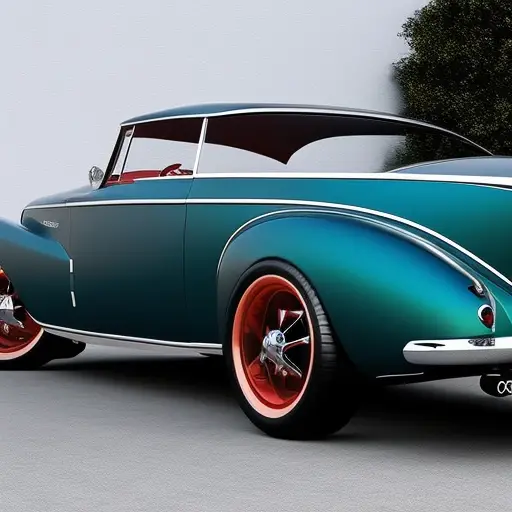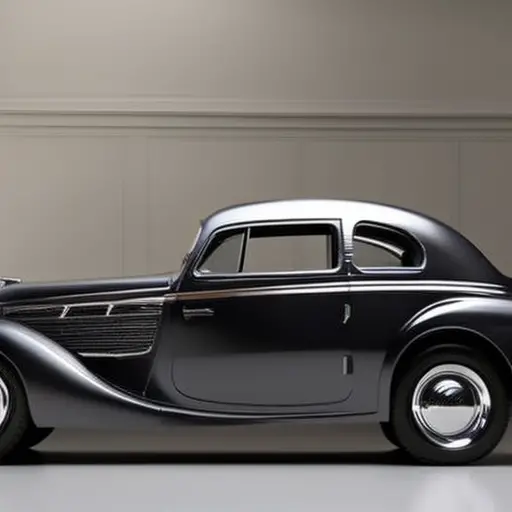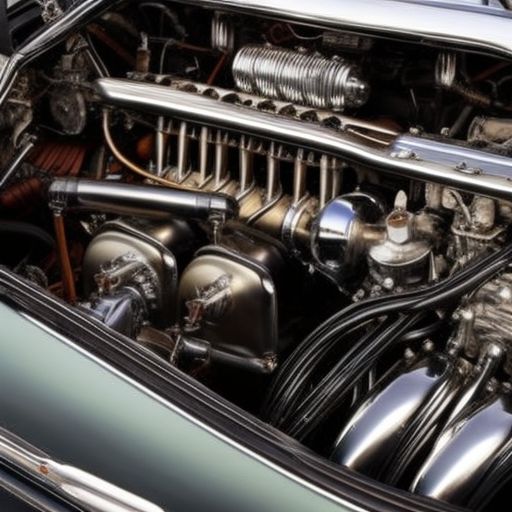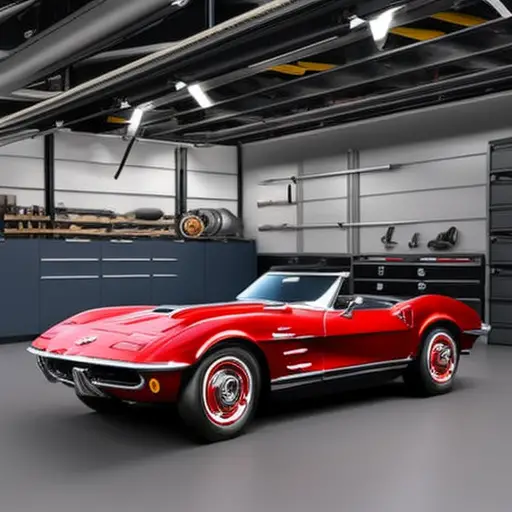The Challenges of Rust Removal in Car Restoration
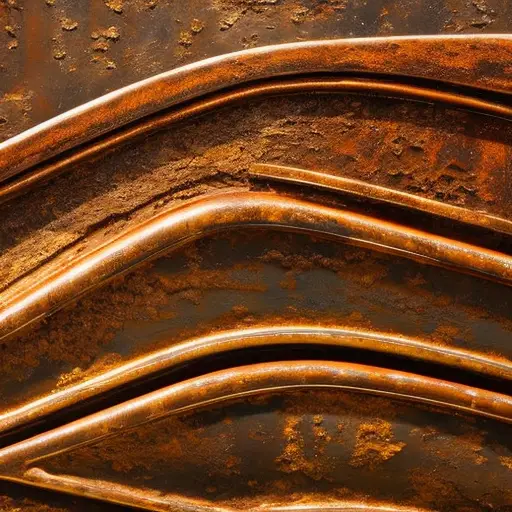
Just as time weathers the mightiest mountains, rust corrodes the cherished classics of automotive history.
In the delicate art of car restoration, the battle against rust is a timeless struggle. From the insidious creep of surface oxidation to the stubborn grip of deep-seated corrosion, the challenges of rust removal are a formidable adversary for enthusiasts and professionals alike.
Delve into the complexities of this enduring endeavor as we explore the techniques and innovations in conquering rust in automotive restoration.
Types of Rust in Car Restoration
The identification of various types of rust is crucial in the process of car restoration. There are three main types of rust that commonly affect automobiles: surface rust, scale rust, and penetrating rust.
Surface rust is the least severe, appearing as a thin layer on the surface of the metal. It can often be removed with sanding or chemical treatments.
Scale rust, on the other hand, occurs when the surface rust is left untreated and begins to spread, forming a rough, scaly layer.
Penetrating rust is the most severe type, as it forms when the rust has penetrated deep into the metal, causing structural damage.
In car restoration, preventing rust is just as important as removing it. There are various rust prevention techniques that can be employed, such as applying rust-inhibiting primers and paints, using cavity waxes to protect the inner panels of the car, and keeping the vehicle clean and dry to prevent moisture buildup.
Regular inspections and maintenance can also help in early detection and treatment of any rust that may develop.
Common Causes of Rust in Classic Cars
Rust in classic cars can be attributed to several common causes.
Moisture and oxidation are primary culprits, especially in vehicles that have been exposed to high humidity or frequent rain.
Additionally, salt and road debris can accelerate rust formation, particularly in regions where road salt is used during winter.
Moreover, a lack of protective coating leaves classic cars vulnerable to corrosion, making it essential for owners to prioritize regular maintenance and rust prevention measures.
Moisture and Oxidation
Moisture and oxidation frequently lead to the corrosion of classic car bodies, presenting significant challenges in the restoration process. Effective moisture prevention and oxidation control are essential to maintaining the integrity of vintage vehicles.
When moisture seeps into the nooks and crannies of a classic car, it accelerates the oxidation process, leading to rust formation. The combination of oxygen and moisture creates the perfect environment for rust to develop, particularly in areas prone to trapping water, such as wheel wells, undercarriages, and around trim pieces. Over time, this corrosion can weaken the structural integrity of the vehicle, compromising its safety and aesthetics.
To address these issues, restoration efforts must focus on thorough moisture removal and implementing effective oxidation control measures.
Transitioning into the subsequent section about ‘salt and road debris’, it is essential to consider the additional factors contributing to rust formation in classic cars.
Salt and Road Debris
Salt and road debris accumulation on vintage vehicles accelerates the corrosion process, posing significant challenges in preserving classic car bodies during restoration efforts. Preventing corrosion caused by salt and road debris requires proactive measures such as regular cleaning and applying protective coatings. Additionally, considering road salt alternatives can also help minimize the impact of corrosion on classic cars. Road salt alternatives like calcium magnesium acetate (CMA) and potassium acetate are less corrosive and can be effective in reducing the harmful effects of traditional road salts. Below is a table highlighting the impact of salt and road debris on classic cars:
| Impact of Salt and Road Debris |
|---|
| Accelerates corrosion process |
| Damages protective coatings |
| Increases rust formation |
Understanding the impact of salt and road debris on classic cars is crucial for implementing effective preservation strategies. Transitioning to the subsequent section, it is evident that the lack of protective coating further exacerbates the challenges of rust removal in car restoration.
Lack of Protective Coating
The lack of a proper protective coating on classic cars further compounds the challenges in preserving their integrity during restoration efforts. Without adequate protective coatings, classic cars are more susceptible to rust formation. This can occur due to various reasons:
-
Exposure to harsh environmental elements such as moisture and salt accelerates the oxidation process, leading to rust formation on unprotected metal surfaces.
-
Abrasion from road debris and gravel can strip away any existing protective coatings, leaving the metal vulnerable to rust.
-
Lack of regular maintenance and reapplication of protective coatings allows for the gradual degradation of the car’s rust prevention measures, increasing the risk of corrosion.
To mitigate these issues, it is essential to implement thorough rust prevention strategies and consistently maintain protective coatings on classic cars.
Impact of Rust on Vehicle Integrity
Rust compromises the structural integrity and safety of vehicles, making it a significant challenge in car restoration projects. The impact of rust on vehicle safety cannot be overstated. Rust weakens the metal components of a vehicle, such as the frame, chassis, and support structures, leading to potential structural failure and compromising the safety of the vehicle occupants.
This deterioration can have long-term effects on the car’s value, as vehicles with extensive rust damage are often deemed unsafe or uneconomical to repair. The presence of rust can significantly diminish the resale value of a vehicle, as it can be costly and labor-intensive to repair the damage caused by rust. Moreover, the perception of safety and reliability associated with a rust-damaged vehicle can deter potential buyers, further reducing its value.
Therefore, addressing the impact of rust on vehicle integrity is crucial not only for ensuring the safety of the vehicle but also for preserving its long-term value. Car restoration projects must prioritize thorough rust removal and structural repairs to maintain the integrity and safety of the vehicle.
Challenges of Removing Deep Rust
Addressing the impact of deep rust on vehicle integrity and safety poses significant challenges in car restoration projects. When deep rust has permeated the metal components of a vehicle, it can compromise its structural stability and overall safety. Removing deep rust requires advanced rust removal techniques, and even then, it presents several challenges:
-
Penetration: Deep rust often extends beyond the surface and penetrates into the underlying metal, making it difficult to completely eradicate without compromising the integrity of the metal itself.
-
Time-Consuming: The process of removing deep rust is time-consuming, as it requires meticulous attention to detail and thoroughness to ensure that all traces of rust are effectively eliminated.
-
Specialized Equipment: Advanced rust removal techniques, such as abrasive blasting or chemical rust converters, require specialized equipment and expertise, adding complexity and cost to the restoration process.
Successfully addressing the challenges of removing deep rust demands a combination of skill, patience, and the use of advanced tools and methods to ensure that the vehicle’s structural integrity and safety are fully restored.
Innovative Rust Removal Techniques
Implementing innovative rust removal techniques is crucial in preserving the structural integrity of vehicles during the restoration process. One such technique gaining popularity is the electrolysis method. This method involves immersing the rusted part of the vehicle in an electrolyte solution and applying a low voltage electrical current. The electrical current causes a chemical reaction that effectively removes the rust without damaging the underlying metal. This technique is particularly useful for removing rust from intricate or hard-to-reach areas of a vehicle.
Another innovative rust removal technique is the use of laser technology. Laser rust removal involves using high-powered lasers to vaporize the rust from the surface of the metal. This precise and non-contact method can effectively remove rust without causing damage to the surrounding areas, making it suitable for delicate car restoration projects.
Both the electrolysis method and laser technology offer advanced solutions for addressing rust in car restoration, providing efficient and effective ways to restore vehicles to their former glory. These innovative techniques are valuable tools in the arsenal of car restoration professionals, helping to overcome the challenges posed by rust and ensuring the longevity of restored vehicles.
Preventing Future Rust Formation
As car restoration enthusiasts, it’s crucial to shift our focus from rust removal to preventing future rust formation.
This involves exploring effective rust-proofing techniques and implementing regular maintenance tips.
Rust-Proofing Techniques
Utilizing effective rust-proofing techniques is essential in preventing future rust formation during the car restoration process. To achieve this, consider the following methods:
-
Chemical Rust Inhibitors: These work by forming a protective layer on the metal surface, preventing moisture and oxygen from reaching the metal and causing rust.
-
Electrolysis Method: This technique involves using an electric current to remove existing rust and prevent future rust formation. By immersing the metal in an electrolyte solution and applying a direct current, the rust is converted back to metal.
-
Applying Protective Coatings: Utilize high-quality rust-resistant coatings such as epoxy or polyurethane paints to create a barrier between the metal and the elements, effectively preventing rust from forming.
Implementing these rust-proofing techniques will help ensure the longevity and durability of the restored car.
Regular Maintenance Tips
To prevent future rust formation and maintain the restored car’s integrity, regular maintenance tips should be followed diligently.
Surface cleaning is crucial to remove dirt, salt, and other debris that can trap moisture and accelerate corrosion. After cleaning, a wax application creates a protective barrier, preventing moisture from reaching the metal surface and causing rust.
Additionally, corrosion prevention products such as rust inhibitors or metal protectants can be applied to vulnerable areas like the undercarriage and wheel wells.
Regular inspections for any signs of rust or paint damage are essential, as catching and addressing these issues early can prevent extensive corrosion.
By following these maintenance tips, car owners can ensure that their restored vehicles remain free from rust and maintain their pristine condition over time.
Transitioning into professional rust removal services, it’s important to seek expert help for stubborn or extensive rust issues.
Professional Rust Removal Services
Professional rust removal services employ advanced techniques to effectively eliminate corrosion from car surfaces, preserving the structural integrity of the vehicle. These services typically involve:
-
Rust Inhibitor Application:
Experienced technicians meticulously apply high-quality rust inhibitors to the affected areas, penetrating and neutralizing existing corrosion. This crucial step halts the progression of rust, preventing further damage to the metal components. -
Protective Coatings:
After thorough rust removal, a durable protective coating is expertly applied to shield the treated surfaces from future corrosion. This coating acts as a barrier, safeguarding the metal against environmental elements and minimizing the risk of rust reoccurrence. -
Corrosion Prevention and Metal Restoration:
Professional rust removal services not only eliminate existing rust but also focus on preventing future corrosion. Additionally, these services often include metal restoration techniques to repair and reinforce the integrity of the affected areas, ensuring a comprehensive solution to the challenges of rust in car restoration.
Frequently Asked Questions
What Are the Potential Health Risks Associated With Rust Removal in Car Restoration?
Potential health risks associated with rust removal in car restoration include potential respiratory and skin hazards. It is crucial to use protective equipment and ensure proper ventilation to minimize exposure to harmful chemicals and particles during the restoration process.
How Can I Determine if a Car Is Worth Restoring if It Has Extensive Rust Damage?
When conducting a restoration assessment, it’s crucial to perform a cost benefit analysis to determine if extensive rust damage justifies the restoration investment. Structural integrity and safety concerns should be carefully evaluated to make an informed decision.
Are There Any Environmental Considerations to Keep in Mind When Removing Rust From a Classic Car?
When removing rust from a classic car, it is crucial to consider the environmental impact of the process. Implementing eco-friendly rust removal methods and ensuring proper disposal of any chemicals or waste materials are essential. Additionally, incorporating rust prevention measures is vital for long-term environmental sustainability.
Can Rust Damage Impact the Value of a Classic Car, Even After Restoration?
Rust damage can significantly impact the resale value of a classic car, even after restoration. Long-term effects of untreated rust can compromise structural integrity and aesthetics, reducing the desirability and market value of the vehicle.
What Are Some Tips for Safely Removing Rust From Hard-To-Reach Areas of a Classic Car?
When addressing rust in hard-to-reach areas of classic cars, it’s akin to navigating a labyrinth. Prioritize rust prevention, use protective gear and specialized tools, and approach with patience and precision.
Conclusion
In conclusion, the challenges of rust removal in car restoration are significant, but not insurmountable. By understanding the types and causes of rust, as well as the impact on vehicle integrity, innovative rust removal techniques can be developed to address deep rust effectively.
Additionally, preventative measures can be taken to minimize future rust formation. Consideration of professional rust removal services can further aid in the restoration process, ensuring the longevity and quality of classic cars.


